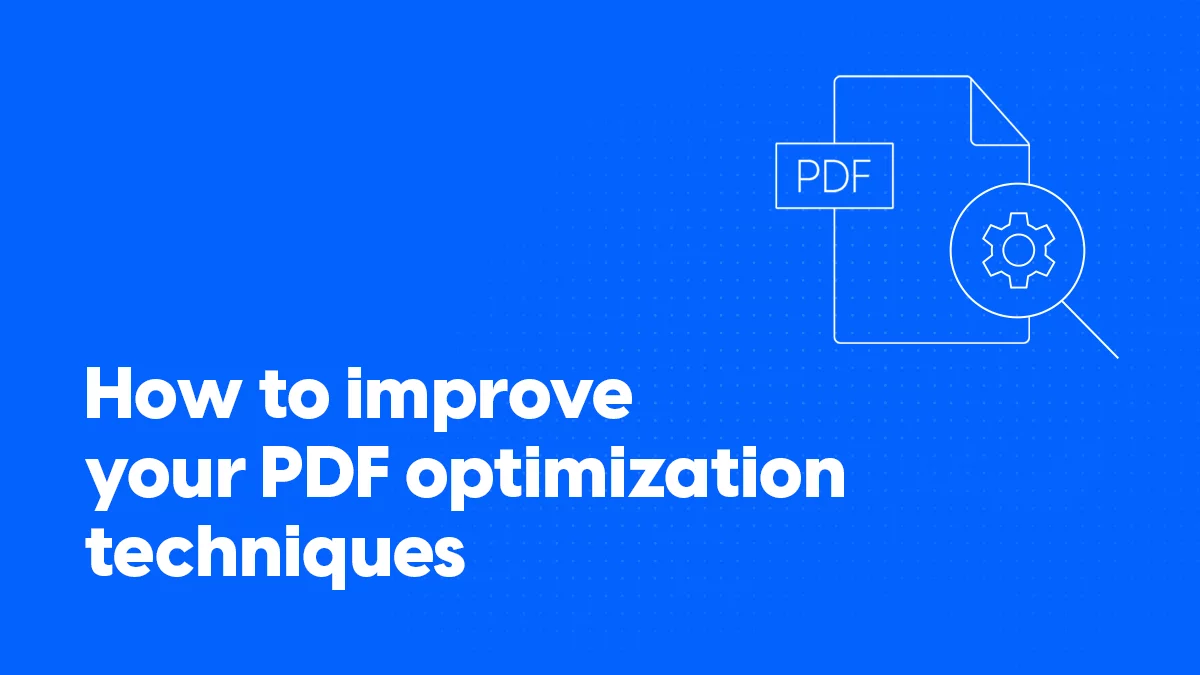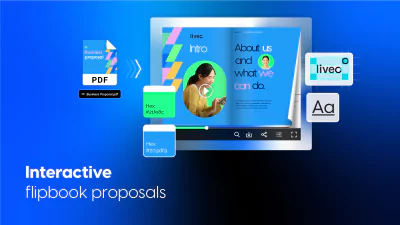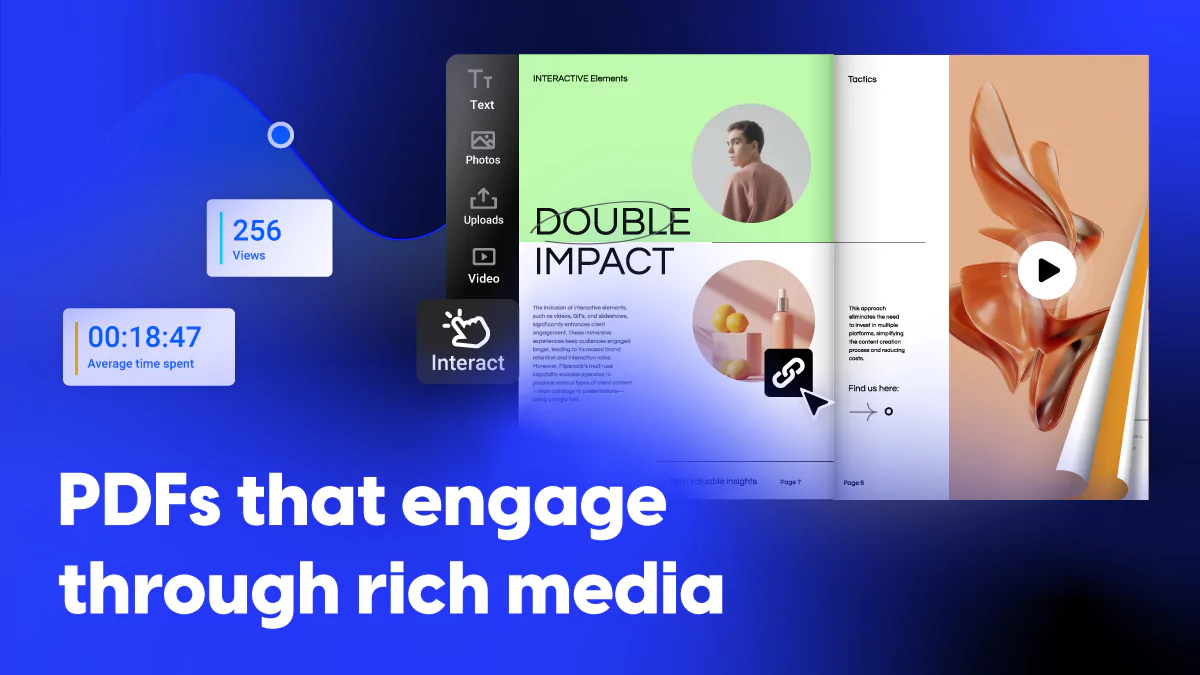How to improve your PDF optimization techniques
The Portable Document Format (PDF) has been around since 1992, proving to be an ideal solution for millions of users over this time period. Its importance is uncontested, but similarly to other technologies, new and improved ones appear over time. The same can be said about PDFs because as you will read in this article, flipbooks are the next best thing.
However, old habits die hard, so this article will offer some information on how to optimize your PDFs for search engines, and if you are willing to try, how to use Flipsnack to improve your PDFs. Without further ado, let’s take a look at some PDF optimization tips.
Are PDFs good for SEO?
This is a general question, as content creators often wonder if they should invest time and effort into releasing their work as PDFs. The answer to the question is yes, and no. It depends on different factors.
Back in the day (before 2001), it was a common belief that PDFs were untouchable, too difficult for Google’s algorithm.
Things changed in 2011 when Google announced that they’ve started indexing PDFs, and here we are in 2021, hundreds of millions of indexed PDFs later. So you might be wondering why anyone would have doubts about uploading their content as PDF since search engines index them.
The truth is that there are different pros and cons PDFs have:
Pros
There are cases when releasing information as a PDF still has its advantages, and it is encouraged in certain situations. For example, ebooks, white papers, and reports often work better when in a PDF format. This is because they have headings that help with the structure and page numbers, making it easy to keep track of progression and increasing the overall reading experience.
Cons
If both a webpage and a PDF file contain the same content, the page will have a higher position than the PDF in most cases.
PDFs aren’t correctly optimized for mobile devices, so they might be more difficult to use on phones or tablets.
Because they lack interactivity features, navigating them isn’t easy. This results in fewer engagement opportunities.
It is difficult to keep track of advanced statistics as you would with an HTML page.
You can’t share them as easily on social media.
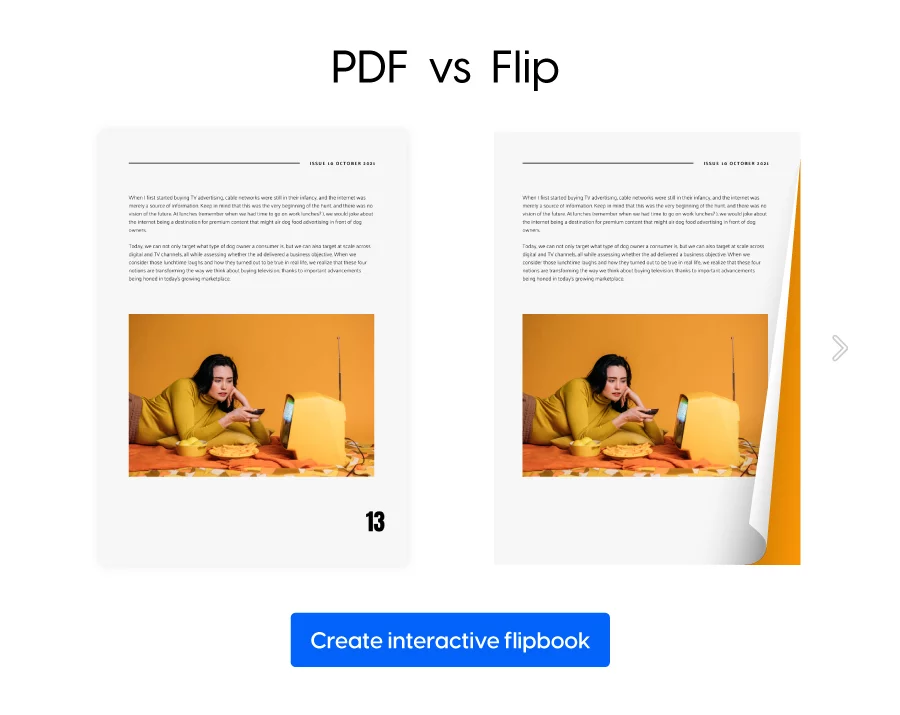
However, this doesn’t mean that they are helpless when it comes to search engine optimization, but there are better alternatives to regular PDFs. Later in the article, I will share some information on how Flipsnack can help you make PDFs more engaging by turning them into flipbooks.
Since this article focuses on SEO for PDFs, let’s get to the point, and see some PDF SEO best practices.
How do I make a PDF SEO friendly?
There are different ways to make your PDF SEO friendly, so here’s a list of some PDF optimization techniques.
- Write good content
- Optimize the title
- Include links
- Use online tools
- Reduce the file size
Let’s take a more in-depth look at each of them:
1. Write good content
Good content is king in almost any domain. When people are searching for something online, they are interested in straight-to-the-point high-quality content. If they search for a recipe, they expect pages that contain precisely this information in their results. If they search for a list of best films, that’s what they expect to find.
Even though the content of a PDF is usually different from what you might find on regular pages, the same rules apply. If you want to stand out from the crowd, then the information you provide should be unique and valuable.
Great content creates space for people to pause and reflect, and that space is where transformation happens.
Jolie Miller
Google knows this as well, and the more quality information your PDF file has, the higher are the chances for it to take the top spots in search results. So when you decide to create a PDF file, think about the information you want to display in it.
When putting together the content, don’t think about its length. Instead, focus on its quality, and make sure that the information is on point. Besides influencing the search engines, quality content is essential for readers as well.
Let’s say that someone downloads a marketing ebook hoping to find some helpful information, only to realize that the information is outdated or rephrased from a different source; that the ebook is useless. If that were to happen, do you think that the same person will download it next time? Most likely not.
2. Optimize the content
As I mentioned, when it comes to PDF optimization, producing quality text is essential, but besides content, you can improve the text even more. To maximize your chances of ranking high in search results, you should adequately optimize the text. What do I mean by that? The text should be appropriately structured, similarly to how you would write a blog article, for example. Or even a school paper. Let me offer some examples.
Headings and subheadings
One trait of a good text is its readability. Instead of writing a large chunk of text, it is much better to separate the pieces of information with the help of headings and subheadings. They will make it obvious when you move from one idea to another.
There are different headings to choose from, and unlike a few years ago, they have a different impact on search engines. For example, it was important for each text to contain an H1 heading back in the day — a single H1 per article. Since then, things have changed, and nowadays, a text containing multiple or no H1 headings might have no problem ranking high in search results.

Headings and subheadings impact search rankings in different ways. First, a properly structured text is more user-friendly, which is a plus, and it also makes it easier for search engines to index the document, so that’s an extra incentive.
Paragraphs
Similar to the previous point, try to use paragraphs and pay close attention to their size. Simply put, paragraphs should be short. Avoid neverending sections and try to limit them to a few sentences. As per the link I posted, a paragraph should be less than 200 words for different reasons.
First of all, there is the user factor. Long paragraphs are difficult to read. Think about it. What would you do if you access a website only to be greeted by a massive wall of text with no end in sight? Would you read it or back out and try to find a different source of information?
Many people lack patience, so make it easy for them to read your content. Make the text skimmable; divide it into subparagraphs. However, common sense prevails: if you must finish an idea, don’t break the text just for the sake of it. Here is some information about the proper paragraph structure that you might find helpful.
Lists are useful if you can use them naturally, and they might even show up as a featured snippet. They divide the content nicely, and who doesn’t like lists, anyway?
Keywords
Regarding search engine optimization, keywords are essential whether we are talking about SEO for PDFs or regular web pages. To achieve the best results, you need to focus your content on specific keywords that your audience might search for. For example, if your PDF is about how to create a brand book, then probably the best keyword to use would be “brand book” and even “how to create a brand book.”
From there on, you can use some associated keywords, like “branding book” or some questions, such as what is a brand book? Or how to build a brand book? And so on. Some practices, like keyword stuffing, are now frowned upon. Keyword stuffing involves including a large volume of keywords in the article, using unrelated keywords, basically attempting to “gain the search engine’s attention.”

As I already mentioned, quality is essential, and since this practice results in a lousy user experience, it will have the opposite effect on the search results. Focus on the best user experience, and try to offer high-quality information.
When it comes to the number of keywords you should include, there is nothing set in stone. Use common sense, and don’t overdo it. Choosing keywords should not be a guessing game, and luckily there are different keyword research tools to choose from for your PDF optimization, but more on that a little bit later.
3. Use link building
Linking is an integral part of search engine optimization, so let me offer you information about three types of links to include in your PDFs as part of your PDF optimization strategy.
Internal links
When one of your website’s pages ranks on the first spots on search results, you hope that the content you’ve provided is important enough that people will remain interested and browse your website.
When a user finds your PDF in a search result, clicking on the link will lead to a download option, and the user won’t land on your website. This makes it more difficult for the user to browse the rest of your website, as with a regular HTML page.
For this reason, it is important to include internal links in your PDF. Internal links are links that redirect to different pages on your website. For example, the link on the “how to create a brand book” above is an internal link. I found the information from the link relevant to the subject, so I included it in the text. If you are interested in it, you can click on it, and that page will open in a new tab.
Internal links have different advantages. The most important one is the valuable information for the reader. Secondly, it is helpful for search results, as PDFs with internal links usually rank higher. Third, what I already mentioned: internal links help keep the reader on your website.
External links (outbound links)
As you have seen, I have also included other links in the text. These links are external links, as they redirect to different websites, not Flipsnack. Similar to the internal links from this article, the external links I’ve included are on point to the subject at hand.

Also, similar to the internal links, external links will help you rank higher on search results. There are also cases when your PDF includes citations, and you can directly lead the reader to them via a link. The same goes for when you use an image and you want to offer the source.
Another reason to use external links is for the information they provide. For example, instead of writing a long text explaining a topic, why not include a link to a page that already does it perfectly? Like this link on the importance of outbound links, for example.
Backlinks (inbound links)
One crucial part of SEO is link building, obtaining links to a website from external websites. These are called backlinks or inbound links and are great for PDF optimization purposes as well.
For example, I wrote this article, and hopefully, someone will find it interesting and relevant enough to include a link to my article on their website.
A concrete example: the link placed on the “link building” word in the first sentence sends you to a Wikipedia article about link building. For Wikipedia, that link is an inbound link from this site.
Why is link building important? It has to do with reliability and quality. According to Desire Marketing, a dedicated link building agency, the more websites link to a specific web page, the higher the chances of that web page being a high-quality one. It is similar to multiple people recommending a product.
How do you obtain backlinks? In theory, backlinks should be organic, but in reality, some of them are bought. Buying backlinks is a common practice, but it is frowned upon by search engines.
Once again, the better course of action is to create high-quality content, and in time hopefully, you will obtain backlinks.
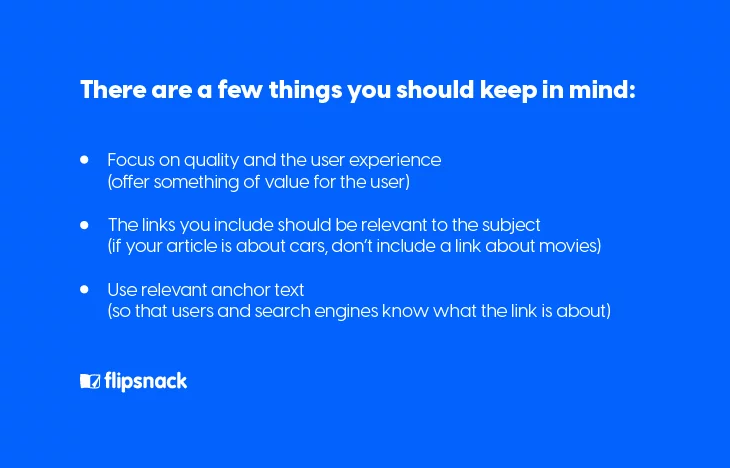
4. Reduce the file size
As I mentioned, search results are heavily influenced by the user experience. This means that a larger file that takes more to load (usually the case for PDFs) will have a lower page speed. As a result, it will be negatively impacted in search rankings. Luckily, there are specific ways to reduce the size of your PDF, and here are the most important ones.
Optimize the fonts and images
This might seem irrelevant, but the truth is that fonts can influence the size of your document. For this reason, there are certain tweaks you can make regarding fonts to reduce the PDF size. First of all, use standard fonts: Times New Roman, Courier, Arial, Helvetica. Basically, many fonts people are familiar with have a reduced size. In case you choose a non-standard font, the size will increase.
Secondly, the more fonts you use, the larger the size of your PDF, so limit the number of fonts in your document. Third, the same goes for font styles. Limit the font styles you use, and that should reduce the size.
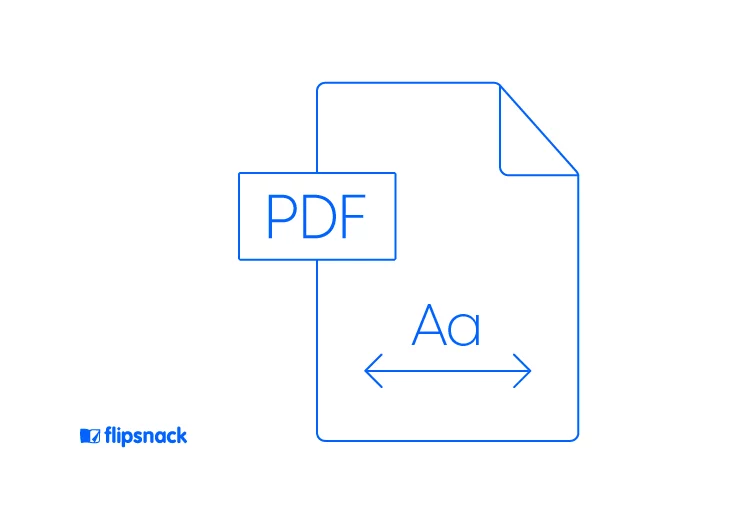
Similar to fonts, there are certain changes you can make to reduce the size of your PDF and tweak your PDF SEO. You can choose vector images, as they look great on multiple devices. You could also resize the images or compress them. For both the fonts and images, I would suggest using the PDF optimizer. For a step-by-step guide, you can find more information on the ways to reduce the size of your PDF in the link above.
Re-save it and compress it
Re-saving and compressing PDFs are some of the fastest ways to reduce the PDF size. In Adobe, simply choose Reduced Size PDF from File and Save as Other option. However, keep in mind that doing so will reduce the overall image quality and remove tags and unwanted objects.
Another quick way of reducing the size is to compress it directly through Adobe. Here is where you can compress the PDF file, and as you can see, the process is fast and straightforward.
5. Use online tools
I previously mentioned that you could use tools for your PDF optimization, so here are some of the most useful I’ve found.
Grammarly and Hemingway App are great for making sure that your text is easy to read and error-free. Both of them work on the freemium model. You can use them for free, but the more advanced features are locked behind a paywall. The freemium version includes a spellchecker, a passive voice checker, and synonym suggestions. They are pretty basic but practical.
When it comes to paragraph length, keywords, and other PDF optimization techniques, Yoast is an excellent choice. You can use it with WordPress (not the free version), and it offers suggestions regarding readability and SEO. For example, it tells you if your paragraphs are too long, if you used the primary keyword as much as you should have, and others.
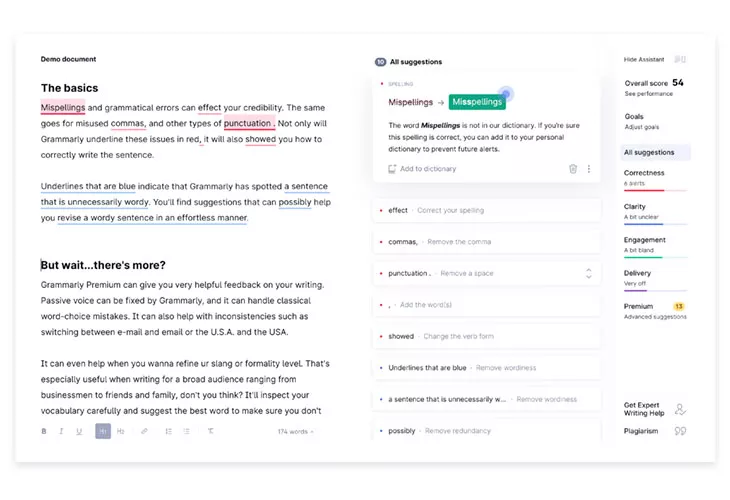
To determine what keywords to use, SEMRush is one of the best tools out there. It offers data about keywords, such as the volume of searches, the keyword difficulty, related keywords, and more. You can use the basic version, but the premium version is the way to go.
If you want to find out how well your PDFs are performing, then Google Analytics and Google Search Console are amongst the best tools to use. Google Analytics allows you to see how well your pages and PDFs are performing, and Google Search Console offers information about how people reach your pages: the search terms they use to get there. This is invaluable information to have.
PDF optimization and Flipsnack
PDFs are helpful, but as I mentioned in the beginning, they can be improved, and this is where Flipsnack comes into play. Let’s see how you can transform your PDFs into SEO-optimized flipbooks. A flipbook is an interactive HTML5 publication that has a page-turning effect, similar to a real book. Unlike regular PDFs, flipbooks solve most of the cons I mentioned. Flipbooks are interactive, easy to navigate, easy ways to share PDFs, and statistics friendly.
There are different ways you can use Flipsnack: create your publications from scratch, use our templates, or upload your PDF. Since this article focuses on PDFs, let’s go with the latter option. You have created a PDF, and you have optimized it: great content, links, keywords, and so on. Let’s see how you can improve your SEO for PDFs even more with the help of Flipsnack.
Add interactivity features
After you’ve uploaded your PDF in Flipsnack, you can choose to either publish it as it is or make it interactive. Interactivity is a game-changer, so adding some interactive features to your publication would be the preferable choice.
The reason for that is that there are cases when readers are interested in more than a hyperlink a PDF has to offer. For example, they might want to see an embedded video, access your social media directly from your publication, interact with a map, and so on. All of that is possible in Flipsnack’s Design Studio.
As already mentioned, ebooks are perfect to use as a PDF file, and they are also perfect for creating gated content. So you can upload your marketing ebook PDF, add an interactive lead form in it, and collect leads.
There are different ways to make your PDFs more engaging; each is a plus for the user experience. As I mentioned, the user experience matters a lot on search results, even if not directly, so it would be to your advantage to make your PDF interactive.
Set the visibility to public
When you are ready to publish your publication, there are different privacy options you can choose from: public, unlisted, password-protected, and private. Of course, what you want to do is set it to “public.”
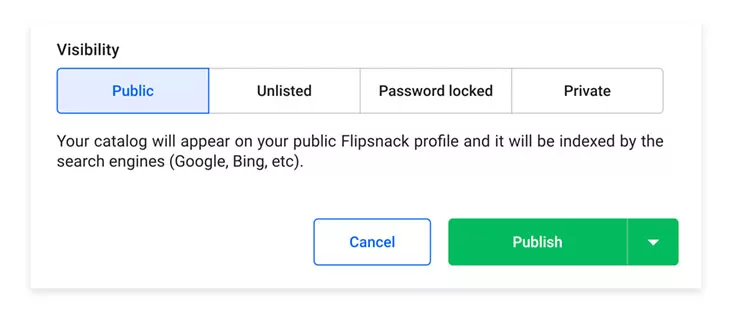
Public visibility is the only way search engines will be able to index and rank it. Each privacy option has its perks and should be used in different situations, but given the article’s purpose, the other ones aren’t worth mentioning in detail.
Optimize the title and description
Before sharing your publication, you have the option to choose a title for it. The title is essential, as it will serve as the meta title, and it helps with the PDF optimization. This is the way your PDF will appear in search results. It is an excellent opportunity to include your main keyword in it, as it increases the chances of it showing up when people search for that particular keyword.
The URL will also use the title, so be thoughtful when you choose it. Make sure it represents what your PDF is about. The title has a limit of 60 characters, but that should be more than enough, especially since a more extended title might not correctly appear in search results.

The PDF description does not influence the search results too much, but it is the perfect opportunity to highlight the text. It might not seem important, but this might make the difference between a user clicking on your tailor-made description and not clicking on an automatically generated one.
It is an excellent opportunity to include some keywords, but make them relevant, and don’t add too many of them just for the sake of it. The first part of the description will represent the meta description, so keep that in mind. Make it unique, relevant, and informative.
Use our sharing options
This one doesn’t directly influence the search results, but it can do so indirectly. Flipsnack offers many sharing options, and it would be a shame not to take advantage of them. For example, you could share your PDF as an email campaign. I mentioned using ebooks as gated content, so this is an excellent opportunity. When people share information in the lead form you’ve included, they receive an email of the flipbook.
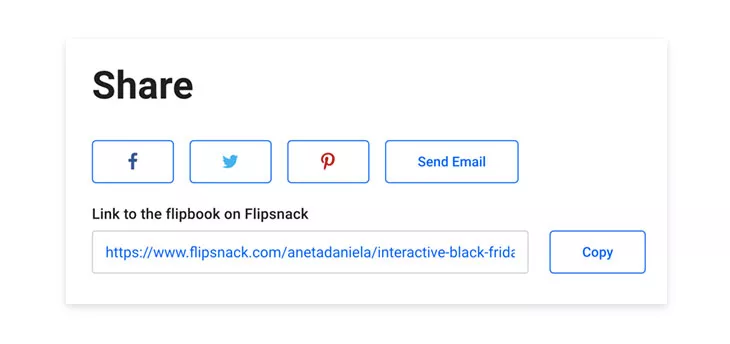
If your PDF has a reduced length, one good idea would be to embed it directly on your website. This way, your readers will have direct and easy access to your publications. The great part about it is that the readers will have the option to download the flipbook as a PDF. The meta tags I previously mentioned will be included in the PDF, and so will the links you’ve added. The animated features are not available in PDF format, but for an engaging offline experience, you have the option to download the flipbook as HTML5.
Use our statistics
One of the most significant disadvantages a PDF has is that you cannot keep track of the same statistics you can with a regular web page. Sure, you can see the clicks and the impressions, but that’s about it. On the other hand, Flipsnack offers the option to transform the PDF into a flipbook and thus, making PDF tracking easy with flipbooks. Access various statistics such as views, clicks, average time spent on the document, devices people used, location, and others.

For deeper insight, you can connect your Flipsnack publications with Google Analytics and Google Tag Manager. This way, you will have all the information you need at your fingertips.
In conclusion
Even though PDFs aren’t quite as effective for search engines, there are still different PDF optimization techniques to use. Once you have followed the tips I mentioned, why not take them to the next level in Flipsnack? Create your publications from scratch, upload your PDFs, make them interactive, share them online safely, and keep track of how well they perform. Don’t rely on regular PDFs to get the job done. Try flipbooks instead by using Flipsnack, the best flipbook maker on the market!
